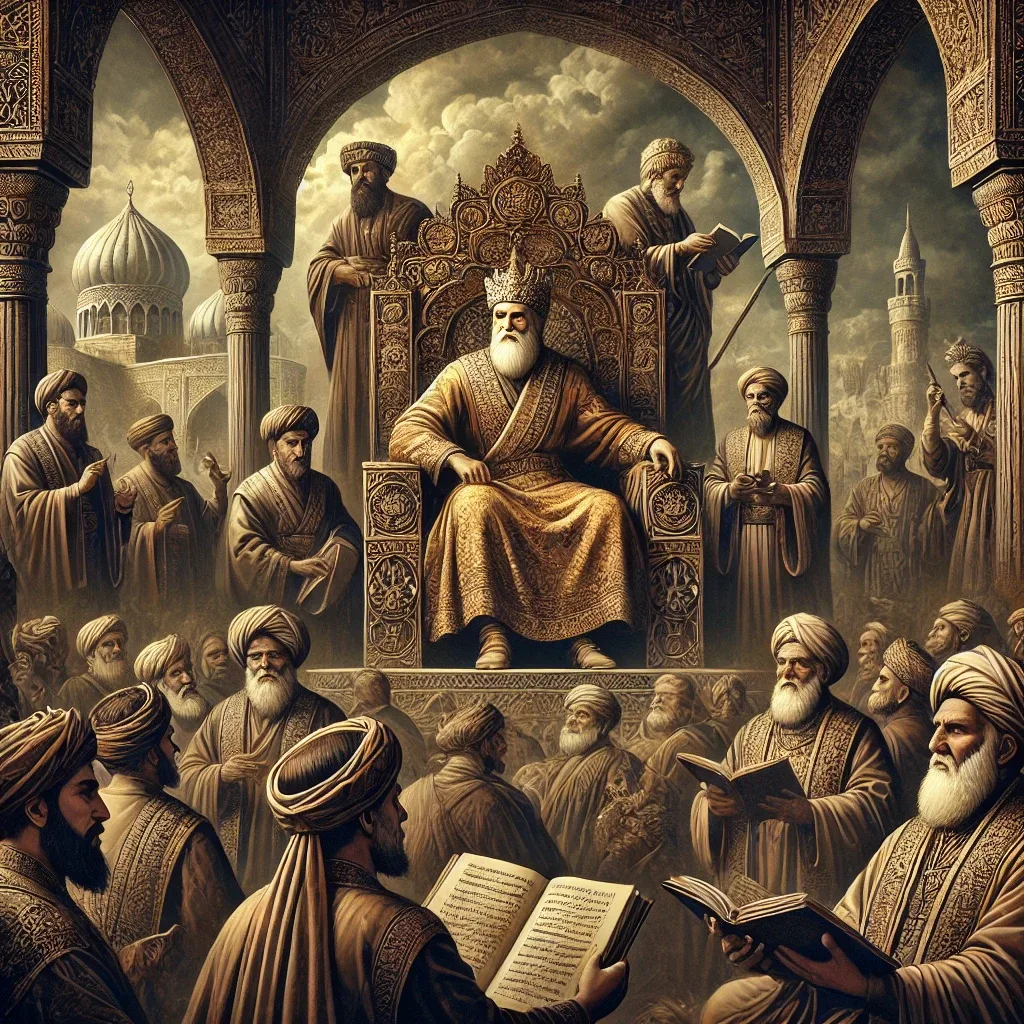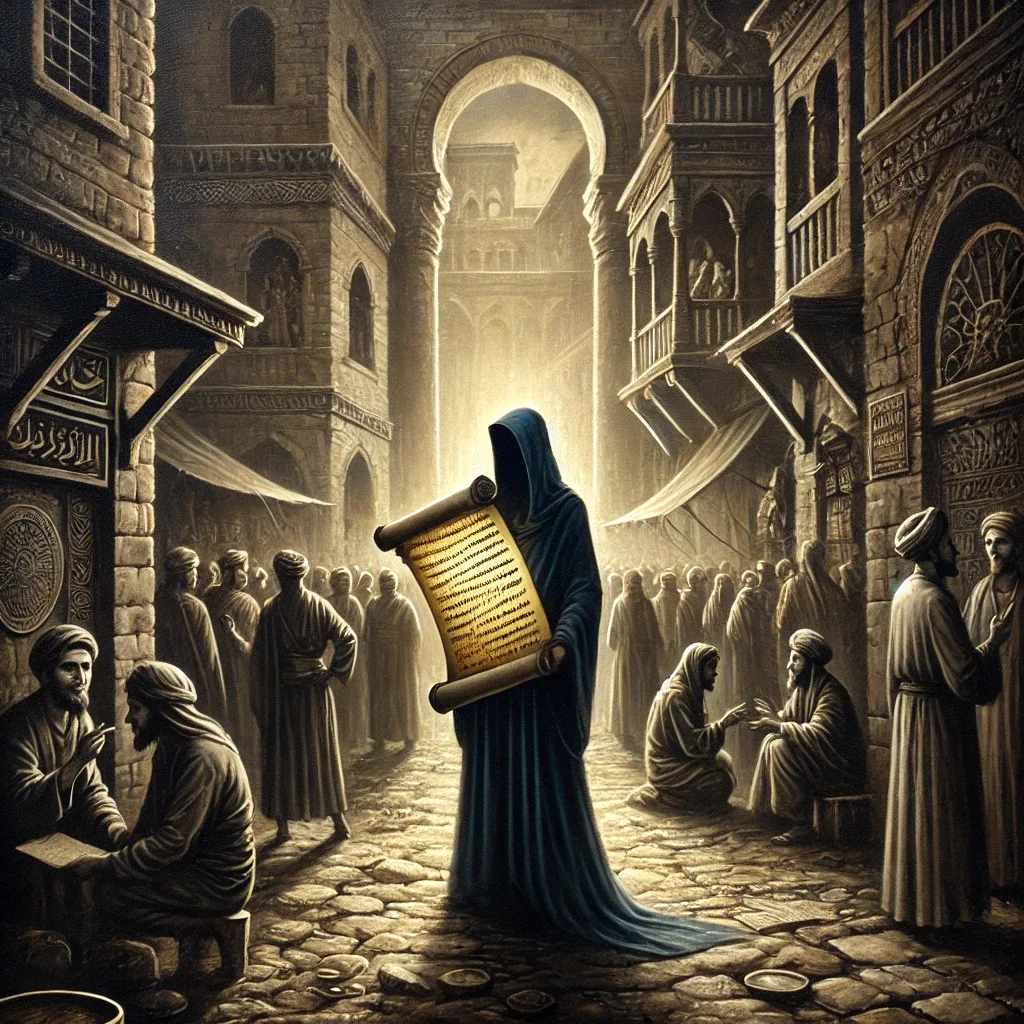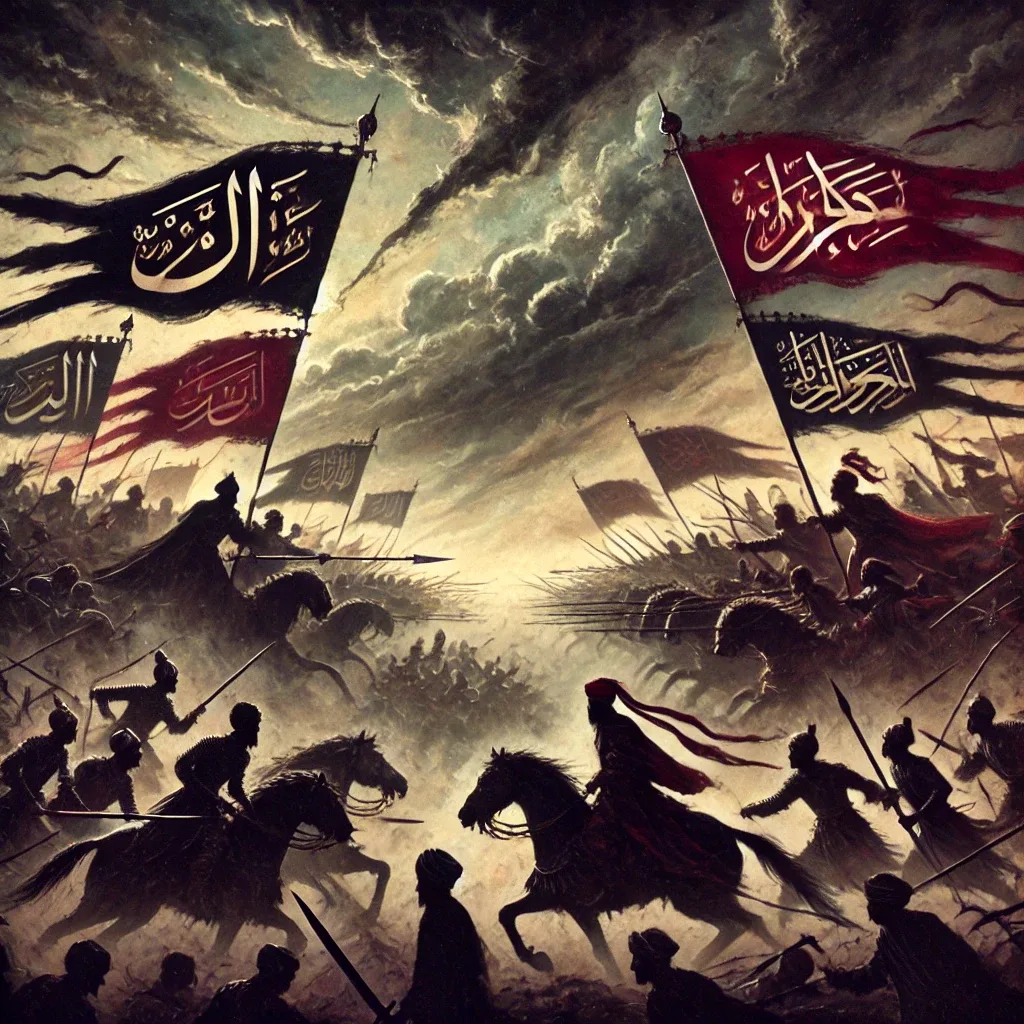Table of Contents
Introduction
The fifteenth and final article in the series “Era of the Rightly Guided Caliphs“ delves into the phenomenon of extremism in Islamic history, examining two opposing extremes: the Khawarij, who manifested extremism through condemnation and takfir (excommunication), and the Shia, who expressed it through excessive veneration and deification. This article places special emphasis on the emergence and evolution of Shia thought during the time of Caliph Ali (may ALLAH be pleased with him). Click here to explore the full series.
The Dual Nature of Religious Extremism: From Kharijite Rejection to Shia Deification
In our previous article, we examined extremism from the perspective of degradation, focusing on the deviation of the Kharijites. Today, we address extremism from the perspective of deification, which reflects the deviation of the Shia.
The issue with the Kharijites was their complete disregard for the value of individuals. Their deviation began with one of their earliest members, who dared to criticize the Prophet (Peace be upon Him), saying, “Be just, O Muhammad, for you have not been just“.
Those who followed this path later targeted the Prophet’s Companions, including the Muhajirun and Ansar, and foremost among them was our master Ali (may ALLAH be pleased with him). Ali, who was the nation’s great scholar, its brave knight, the fruit of the Prophet’s (Peace be upon Him) nurturing, and one of the ten promised Paradise, was belittled by the Kharijites. They dismissed his status, demeaned all the Companions, and fought anyone who did not align with their views.
On the other hand, the Shia deviation stemmed from excessive veneration. They elevated Ali far beyond his rightful status, attributing to him qualities he never claimed for himself—qualities that neither the Prophet (Peace be upon Him) nor any of the Companions (may ALLAH be pleased with them), ever assigned to him. In their extremism, they even went so far as to accuse Gabriel of error, let alone the Companions.
As a result, the generation of Companions, in the eyes of both the Kharijites and certain Shia followers, was reduced to one that deviated from the straight path and failed to establish Islam properly. This distorted perspective stands as one of the gravest and most appalling criticisms of the Prophet (Peace be upon Him). These Companions—who were the dawn of Islam, the Prophet’s closest followers, and the fruit of his nurturing—were the ones who supported him and upheld Islam during its most critical moments.
The Ancient Origins of Religious Authority: Foundation of Shia Thought
Where do the roots of Shia ideology begin? The origins of Shia thought can be traced back to ancient kingdoms where ruling systems were dominated by families and empires that governed through force. These rulers often claimed for themselves qualities and privileges that ordinary people could never possess. At times, they even declared themselves to be gods, demigods, or rulers appointed by divine will. To legitimize their tyrannical rule, they cloaked their authority in a facade of holiness, attributing to themselves a kind of divinity. This was done to consolidate their power and ensure the compliance of their subjects.
Every tyrannical, pharaonic system had its own class of priests, monks, and scholars who molded religion to serve the interests of the regime. These figures worked to sanctify the ruler in the eyes of the people, steering them away from resistance and manipulating religious laws to reinforce the ruler’s oppression.

This dynamic is what prompted Marx to say, “Religion is the opium of the people”. In such contexts, tyrannical systems exploited religion as a tool to pacify the masses. Priests, rabbis, monks, and religious figures became instruments of oppression, sedating the people and diverting them from resisting or even questioning the injustices they faced.
These practices were prevalent in ancient kingdoms like Persia and Rome, where the concept of a royal family or a deified ruler became deeply ingrained. This mindset demanded submission and attributed a sacred status to rulers. Similarly, among the Arabs in the pre-Islamic era, there were clear disparities and racial discrimination. Tribes often considered themselves superior to others, elevating their status and creating divisions within their society.
The Prophet’s Legacy: Origins of Shia Leadership Claims
The Prophet (Peace be upon Him) belonged to the nobility of Quraysh, being from Bani Hashim, the leaders of Mecca and the masters of Quraysh. As Heraclius remarked in the well-known hadith of Abu Sufyan, “Thus are prophets sent from among the nobles of their people”. The environment in which the Prophet (Peace be upon Him) was sent had long established a system where rulers and certain individuals were elevated and even deified above others.
When the Prophet (Peace be upon Him) brought Islam, he introduced a religion where all people were equal, like the teeth of a comb, with no superiority of an Arab over a non-Arab or a white person over a black person, except through piety and good deeds. This new way of life began in Mecca, then expanded in Medinah, and eventually reached the lands of Persia and Rome.
It became essential to consider societal dynamics when selecting a caliph. As previously discussed, the Ansar conceded the caliphate to the Muhajirin, recognizing that the Arabs would only accept leadership from among the Quraysh. However, some Quraysh tribes, whose hearts had not fully embraced Islam, viewed Abu Bakr’s leadership skeptically. They saw him, a member of the relatively less influential Taym tribe, leading over more prominent clans such as Bani Hashim, Umayyah, and Bani Makhzum.
The bloodline of the Prophet (Peace be upon Him) connected closely with Ali. All the Prophet’s children passed away during his lifetime, and their children who had offspring also died during his lifetime. The only continuation of his lineage was through Hassan and Hussein, the sons of Ali (may ALLAH be pleased with them).
The pre-Islamic mindset, with its inclination toward royal families and hereditary rule, found it easier to envision the caliphate transitioning to Ali after the Prophet (Peace be upon Him), given his close kinship and the fact that the Prophet’s grandchildren were his sons. This provided fertile ground for the emergence of Shia thought—a notion of a royal or sacred household exercising governance and embodying noble blood.
During the caliphate of Uthman ibn Affan (may ALLAH be pleased with him) this idea began to take root. It was during this time that a Jewish man from Yemen, AbduLLAH ibn Saba, who had outwardly declared Islam, emerged and played a significant role in shaping this narrative.
AbduLLAH ibn Saba: Architect of Early Shia Ideology
AbduLLAH ibn Saba was the first to sow the seeds of Shia ideology, seemingly following a pattern similar to what his Jewish predecessors had done to Christianity. Just as Christianity was corrupted by Jews who outwardly embraced it and then led it toward paganism, AbduLLAH ibn Saba sought to disrupt Islam from within.
Originally from Yemen, AbduLLAH ibn Saba traveled to Basra, then Kufa in Iraq, and eventually to Egypt, where his ideas gained traction. His primary goal was not to propagate Shia ideology but to create discord within the Muslim community. His main target was our master Uthman (may ALLAH be pleased with him) against whom he incited rebellion.

Nevertheless, the ideological underpinnings of his message were distinctly Shia in nature. He is reported to have said, “I wonder at those who believe Jesus will return but do not believe Muhammad will return! How can this be when ALLAH says: ‘Indeed, [O Muḥammad], HE who imposed upon you the Qur’ān will take You back to a place of return‘1 (Suraat ‘Al-QaSaS, 28:85)?” In doing so, he twisted the meaning of this verse, which was revealed to the Prophet (Peace be upon Him) during His migration as a promise of His eventual return to Mecca.
AbduLLAH ibn Saba exploited the virtues of Ali ( may ALLAH be pleased with him) as a means to promote his agenda. He distorted the Prophet’s (Peace be upon Him) saying that every prophet has a successor, asserting that since Muhammad was the Seal of the Prophets, Ali must be the Seal of Successors. He further provoked unrest by questioning, “What do you think of those who usurped Ali’s right to the caliphate and took control of this nation’s affairs?”
This rhetoric became his primary tool to stir discord and incite rebellion against our master Uthman (may ALLAH be pleased with him).
The Forged Letters: Strategic Discord in Early Shia Development
Indeed, discord was stirred against Uthman, may ALLAH be pleased with him, and rebellion arose from Egypt, Basra, and Kufa. Those who carried the seeds of this discord remained hidden throughout the early stages but emerged at critical moments to further their agenda.
One such moment was when the dissenters confronted Uthman (may ALLAH be pleased with him). Through dialogue, he addressed their grievances, and resolutions were reached. Uthman accepted their proposals, and the rebels from Egypt, Kufa, and Basra returned to their homes, seemingly satisfied.
However, on their way back, the group from Egypt encountered a man who acted suspiciously—approaching them and then retreating repeatedly. When they captured him to investigate, they discovered a letter in his possession. This letter, supposedly from Uthman to his governor in Egypt, ordered the execution of the rebel leaders who had returned under safe conduct. Feeling betrayed, the Egyptians immediately turned back to Medinah, reigniting the rebellion.
Uthman (may ALLAH be pleased with him) later swore that he never wrote the letter, affirming its forgery. Similar forged letters were also attributed to Lady Aisha, Ali, Talha, and Al-Zubayr (may ALLAH be pleased with them), creating confusion and fueling discord. These fabricated letters laid the foundation for the concept of Nasb—hostility toward the family of the Prophet (Peace be upon Him). For centuries, some believed that Ali (may ALLAH be pleased with him) had a role in Uthman’s assassination, a misconception rooted in these forgeries.
Lady Aisha (may ALLAH be pleased with Her) was also accused of inciting rebellion against Uthman. When confronted, she replied, “By the One in whom the believers believe and the disbelievers disbelieve, I never wrote them anything black on white until I sat in this place of mine“.
When the Egyptians returned to Medinah, they were astonished to find that the people of Kufa and Basra had also come back. Ali (may ALLAH be pleased with him) addressed them, denying any involvement in writing letters to incite rebellion. He asked the people of Basra and Kufa, “Why have you returned?“ They replied, “We returned to support our brothers from Egypt”. Ali then questioned them, saying, “How did you know what happened with your Egyptian brothers when you were stages away? This matter was plotted at night; this matter was decided in Medinah“.
It became evident that this plan was orchestrated in Medinah before the rebels dispersed. The Saba’ites, led by figures like AbduLLAH ibn Saba, appeared at such decisive moments to sow discord and inflame divisions among Muslims.
The Battle of the Camel: Sabotage of Muslim Unity by Early Shia Agents
The Saba’ites appeared again at another pivotal moment, this time instigating conflict between the army of Ali and the army of Talha and Al-Zubayr. Before this, Ali’s army, through his ambassador Al-Qa’qa ibn Amr al-Tamimi, had communicated with Lady Aisha, Talha, and Al-Zubayr. They had reached an agreement to cease fighting, submit to Ali’s leadership, and calm the situation without pursuing immediate retribution for the murder of Uthman.
However, when the two armies encamped near each other and a peaceful night had passed, those responsible for Uthman’s murder incited trouble. They spread rumors, telling one group, “Ali has betrayed”, and the other, “Al-Zubayr has betrayed”. This deliberate provocation sparked a battle that neither side could halt once it began. The resulting clash became the first major discord among Muslims and marked the beginning of significant internal conflict, known as the Battle of the Camel.
Amid the turmoil spreading across Muslim lands and the crises Ali (may ALLAH be pleased with him) faced during his caliphate, the Shia ideology planted by AbduLLAH ibn Saba continued to grow. It found fertile ground in the chaos of this era, drawing legitimacy from the strained and divided atmosphere among Muslims.
The Three Branches of Early Shia Belief: From Deification to Preference
Some individuals among the followers of Shia ideology during the time of Ali went to such extremes that they began to consider him a deity. On one occasion, as Ali entered the mosque, they prostrated before him. Surprised, he asked, “What is this?” They replied, “You are HE”. He questioned them further, saying, “Who is He?” and they answered, “You are ALLAH”. Ali, shocked by their blasphemy, imprisoned them and gave them three days to repent. When they refused to retract their statement, he ordered a trench to be dug, filled it with fire, and executed them by burning.
When AbduLLAH ibn Abbas (may ALLAH be pleased with him) heard of this, he disapproved of the method, recalling a hadith of the Prophet (Peace be upon Him): “None should punish with fire except the LORD of fire“2. However, he agreed that these individuals deserved execution for apostasy but not through fire.
During the caliphate of Ali (may ALLAH be pleased with him) Shia thought manifested in three distinct categories:
- The first category: Those who went to the extreme of deifying Ali, claiming him to be ALLAH. Ali dealt with them harshly, punishing them with death by fire.
- The second category: Those who began cursing Abu Bakr and Umar (may ALLAH be pleased with them) accusing them of usurping the caliphate from Ali. When Ali heard of someone engaging in such behavior, he sought to have them brought to justice and executed. One such individual fled to the Persian city of Circesium to escape punishment.
- The third category: Those who preferred Ali over Abu Bakr and Umar but refrained from cursing them. Ali (may ALLAH be pleased with him) firmly opposed this behavior as well. He declared, “By ALLAH, if anyone is brought to me who prefers me over Abu Bakr and Umar, I will flog him with the punishment for slander“.
Ibn Taymiyyah (may ALLAH have mercy on him) remarked:
“It has been narrated from Ali through more than eighty chains that he said, ‘The best of this nation after its Prophet are Abu Bakr and Umar, may ALLAH be pleased with them’”
This was the state of Shia ideology during the time of Ali (may ALLAH be pleased with him). It represented the earliest seeds of discord in Islam, with the most extreme deviation being the claim of divinity for Ali.
Ali’s Paradox: Defending Islam Over Self-Interest
The Kharijites and the Shia, despite their contradictions, shared the belief that the general Muslim community was either misguided or disbelieving. Consequently, both groups became sources of corruption within the Muslim nation and served as gateways for its enemies to infiltrate.

Remarkably, we observe that our master Ali (may ALLAH be pleased with him) punished those who deified him but did not punish those who disbelieved in him or criticized him—unless they took up arms and rebelled against the Muslim community. This behavior is strikingly different from the typical nature of rulers, who tend to favor those who exalt them and oppose those who challenge them.
Ali was, as expected, a product of the Prophet’s (Peace be upon Him) exceptional upbringing. He prioritized protecting the religion over himself. This is evident in how his response to those who went to extremes and attributed divinity to him was far more severe than his response to those who opposed or disbelieved in him. He only engaged the latter in battle when they resorted to violence against the Muslim community, while he immediately took action against those who deified him and committed excesses in his regard.
Preserving Prophetic Legacy: The Community’s Stand Against Extremism
The reality is that the image both the Kharijites and the Shia project of the companions of the Prophet (Peace be upon Him) indirectly reflects criticism of the Prophet (Peace be upon Him) himself. After all, these companions were the fruits of his guidance and nurturing. Throughout history, Muslims have often preferred to fight under the Kharijite banner rather than align themselves with the Shia.
One of the most notable examples of this occurred in Morocco during the fourth century Hijri, when the Ubaidiyyah Fatimid state was established. At that time, Abu Yazid, a leader from the Kharijites, rose in rebellion against the Fatimid state. The jurist Abu Bakr al-Maliki stated, “It is obligatory to join Abu Yazid the Kharijite and cut off the Ubaid state because the Kharijites are Muslims who inherit and are inherited from, whereas the Ubaid state has departed from the religion.”
Thus, in moments of choice, the nation often chose to oppose the Shia, even if it meant siding with the Kharijites. Despite their historical presence, neither the Kharijites nor the Shia ever represented the majority of this nation. Instead, the vast majority of Muslims adhered to neither doctrine, viewing these groups as anomalies and outliers within the larger Muslim community.
The Prophet (Peace be upon Him) gave his nation glad tidings, assuring them that ALLAH, the Blessed and Exalted, would bestow upon this nation individuals endowed with knowledge to counteract corrupt interpretations of Islam. He said:
“This knowledge will be carried by the trustworthy ones of each generation, who will negate from it the distortion of the extremists, the interpretation of the falsifiers, and the claims of the ignorant“3
We ask ALLAH, the Blessed and Exalted, to teach us what benefits us, to grant us benefit from what HE teaches us, and to increase us in knowledge. May peace, mercy, and blessings of ALLAH be upon you.
Sources:
- Mohamed Elhamy. عصر الخلافة الراشدة | 15. فتنة الغلو: الشيعة. YouTube Video.

